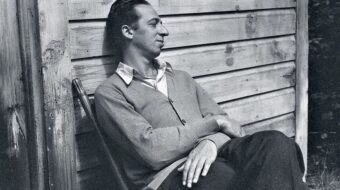“History is written by the winners,” wrote Howard Zinn in his book A People’s History of the United States to suggest to us that the official version of past events is nothing more than the version produced by the nation or group that has imposed itself by force or some other oppressive means. It is the version of the victorious nation. It is the dominant group’s story. Beyond the slightest doubt, an arch-example of this concept of history is the figure of Christopher Columbus, who is considered by some to be a “hero of the human race,” and by others as a “villain” or a “genocide.”
In today’s world, with its deepening gulf between rich and poor nations, Oct. 12 ought to be an occasion for profound reflection and analysis. We need to look behind the curtains that surround today’s and yesterday’s official versions to find the real meaning of the supposed “discovery” of America or the “encounter of two worlds.”
If we look to both past and present and take an objective balance of history, the figure of Columbus cannot help but be associated with an extremely tragic toll.
In the light of the facts, perhaps the only compliment that can be grudgingly granted to the “Genoese” is that of having the courage to embark on a failed intent to discover a western route to the Indies. However, there the story ends, since he only made it a quarter of the way. The dreamed-of “route to the Spice Isles” would only later be opened by another European navigator, the Portuguese Fernando Magellan (1519-1522). Paradoxically, Christopher Columbus would go to his grave still ignorant of his “discovery,” convinced that in his voyages he had actually arrived somewhere in Asia or Japan.
In studying history we can find no better reason than that for Columbus’ over-inflated reputation. However, very much to the contrary, from the perspective of the oppressed peoples of the Americas and the world we discover the “Admiral of the Ocean Sea” as the cruel founder of an era of systematic looting, genocide and depredation of a hemisphere in which advanced cultures flourished. These were cultures whose level of development in several aspects has not yet been surpassed or even equaled to this day.
The flood of pain unleashed by Columbus dates back to the very moment when he landed in the Bahamas and repaid the friendly hospitality of the Arawaks by seeking to enslave them. “With fifty men,” he proclaimed, “we could subjugate them all and do with them whatever we wish.” In later decades his proclamation was translated into brutality, death, torture and depredation perpetrated against millions of people, a horror that, according to the eyewitness testimony of Father Bartolome de las Casas, “went beyond the worst imaginable nightmare.”
On the island of Hispaniola (Haiti), “the Great Explorer” would show the true greatness of his noble spirit (and the real reason for the “discovery” and the Conquest) when he ordered everyone over 14 years of age to provide a certain quota of gold. “Indians” who could not meet their quota had their hands cut off and were allowed to bleed to death. In a span of only two years Hispaniola’s population of 250,000 was cut in half by cold-blooded murder, mutilation and suicide. Thanks a lot, Admiral!
The tragic pattern begun by Columbus in the Antilles would expand throughout the Americas like a raging fire that, according to chronicler Pedro Cieza de León, “would raze all the greatness that the continent had produced,” leaving nothing but death, pain and despair everywhere that the “gentleman conqueror” passed.
Tenochtitlán, the Aztec capital, was considered to be bigger, more orderly and cleaner than any European city of the era, but would succumb to Spanish betrayal and imperial greed in 1521. Tahuantinsuyu, an empire geographically larger and more advanced in some areas of knowledge than any of its European contemporaries, would suffer the same fate in 1533. No nation in history has been able to eradicate hunger like the Incas did. No European nation of the 16th century could match their engineering, architecture, agriculture and irrigation that allowed cultivation of every available space in the Andes and their construction of roads, bridges, fortresses and temples like those of Sacsayhuamán and Machu Picchu, today considered marvels of human achievement.
The arrival of European “gifts” to the Americas meant death, destruction and misery for the hemisphere, and a setback of centuries in social development. The people of the Americas were condemned to be subjects, servants and providers of cheap raw materials for a capitalist empire that never could have come to exist without the gold, silver and labor of the “New World.”
Because of all of the consequences and connotations associated with that 12th of October, 1492, the peoples of the world and all those who, in the words of Fray Bartolome de las Casas, have a “true conscience,” we celebrate neither discovery nor conquest, neither invaders nor usurpers. But we do celebrate the legacy of resistance symbolized by Rumiñahui and Zope-Zopahue, Quisquis and Calicuchima, Tupac Amaru and Lautaro. We celebrate the legacy of all those peoples who stand up in rebellion with the dream of living in freedom.
October 12th celebrations in Latin America:
- Indigenous Resistance Day (Venezuela)
- Original Peoples’ Day (Peru)
- Day of the Peoples, of Diversity, and of the Encounter of Cultures (Ecuador)
- Day of Tragedy (Aymara Parliament: Chile, Bolivia and Peru)











